Nintendo Switch OLED
The instant I held the Nintendo Switch OLED in my hands, I knew that if I planned to continue playing Switch games in handheld or tabletop mode, I needed to upgrade to the new version. No, it’s not the fabled Nintendo Switch 4K, but this October 8-bound upgrade is the one that matters if you game on the go, away from the TV-tied docking station.
There was no better demonstration of this than my time going hands-on with the new Nintendo console, blasting my way through early levels of the launch game Metroid Dread. The game, also due out October 8, is compatible with the old Nintendo Switch and Nintendo Switch Lite, which is good news since sold-out Nintendo Switch OLED pre-orders will make the new console hard to come by at first.
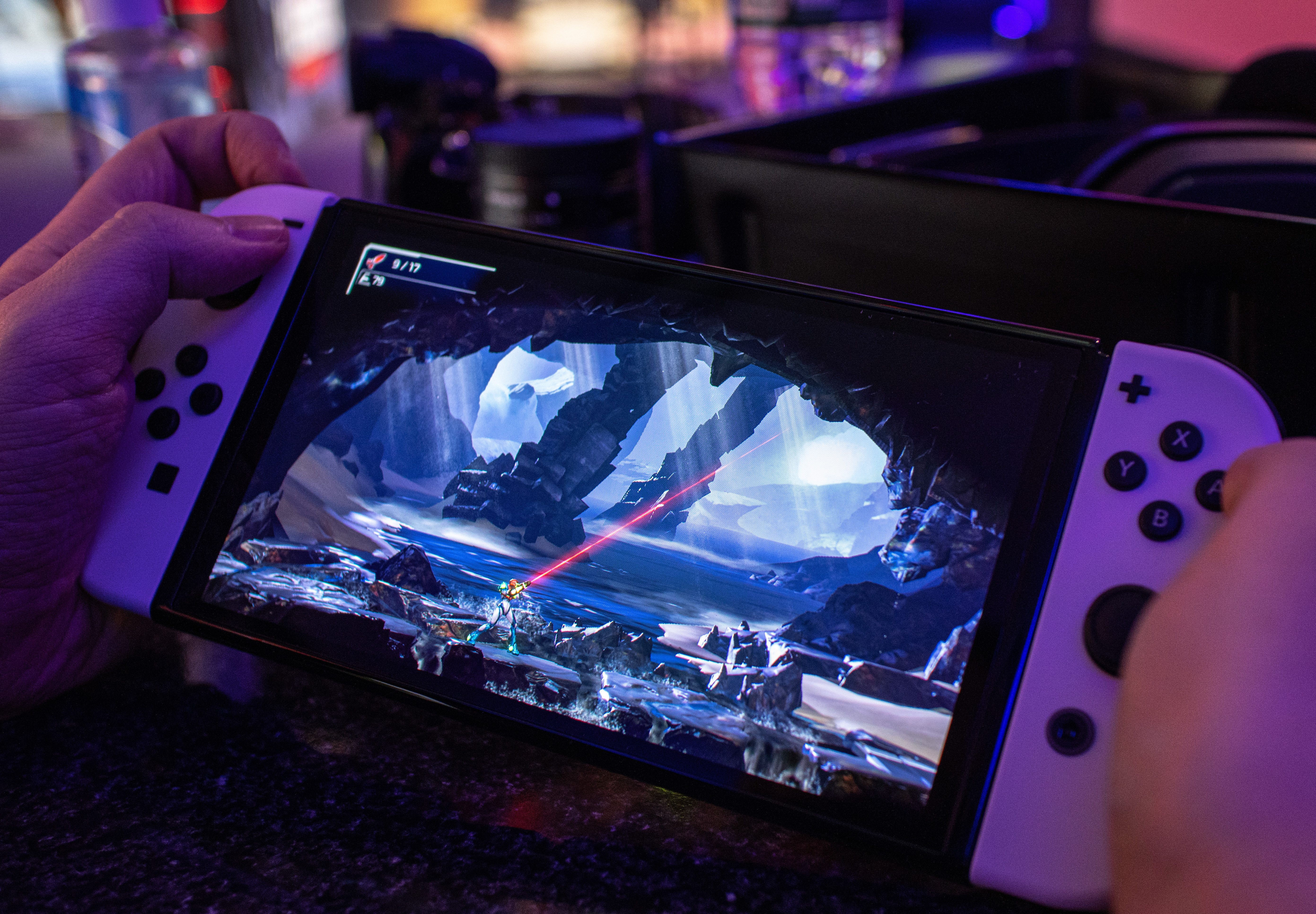
I found the larger 7-inch Switch OLED screen more immersive than I had anticipated before my hands-on time and, after four and a half years of using the bezel-heavy 6.2-inch original Switch with its dated LCD screen, I can’t see myself going back. That’d be like asking me to give up my iPhone 13 Pro Max to return to an iPhone 5 with its thicker borders. No thanks.
I also dug the higher contrast ratio, ideal for darker games. That’s why Metroid Dead is a great vehicle for the Switch OLED – it has spots of bright colors among deep black stages. The screen resolution is still 720p instead of 1080p away from the dock, but at a screen size like this, which doesn’t stretch the pixels, Metroid’s Samus Aran looks crisp and her suit colors pop nicely on the bright OLED panel. I’ll just always wonder how much better everything would look with a bit more pixel density on a 7-inch Full HD display.
Switch OLED retains a familiar look with nearly identical dimensions to the original Switch despite its noticeably larger screen size. This means it supports the rail system that allows for the detachable Joy-Con controllers to be attached to the sides of the screen. The Switch OLED model I played with had those fresh-looking white Joy-Con attached, though Nintendo is also launching a model with the original Neon Red and Neon Blue Joy-Con colors.
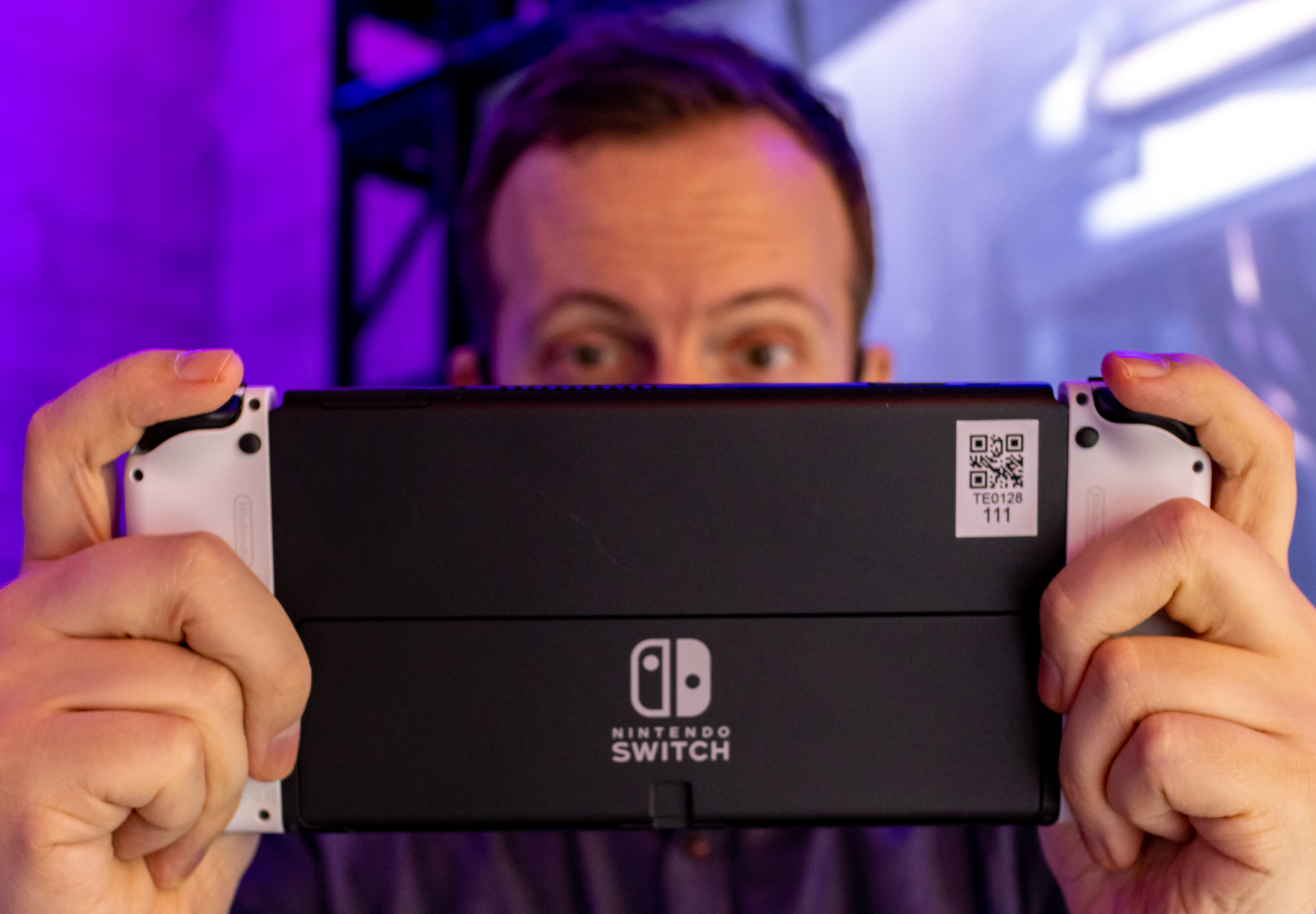
I found the retooled rear kickstand, now wider and more durable, useful for the first time in tabletop mode and the speakers are powerful enough that I didn’t immediately reach for the headphones Nintendo provided during my demo. Other perks, like 64GB of internal storage (instead of 32GB on the original model) and Ethernet LAN support on the docking station, should benefit everyone – whether you play in handheld mode, tabletop mode and TV mode.
Most of the Nintendo Switch OLED upgrades are tailored toward players who game away from the TV docking station that’s still capped at 1080p. This isn’t the Nintendo Switch Pro that many people were anticipating but it’s a stepping stone – a familiar, but noticeably improved handheld console that’s the new best way to play all of Nintendo’s exclusives for the foreseeable future.
Price and release date
You’re going to pay more for that bigger, better screen, extra storage and reliable kickstand, but not pay through the nose. The Nintendo Switch OLED price is $349.99 / £309.99 / AU$539.
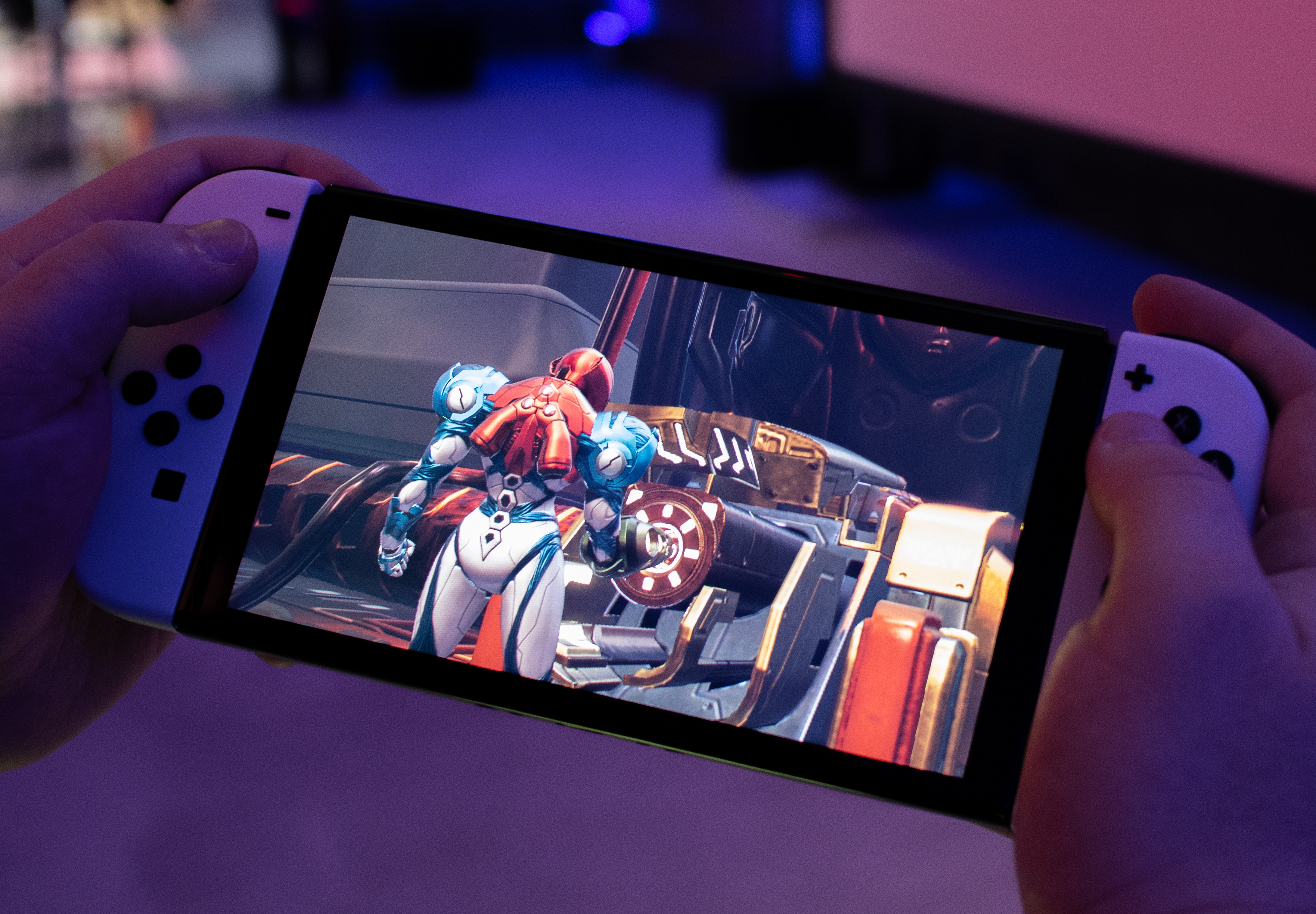
That’s $50 / £30 / AU$90 more than the Nintendo Switch 2017, which still sells (and sells out) at its launch price of $299.99 / £279.99 / $449. The handheld-only Nintendo Switch Lite remains $199.99 / £199.99 / AU$329.95 without the ability to dock it and display games on a TV.
The Switch OLED release date is Friday, October 8, and pre-orders remain hard to come by. It went on sale in mid-July in most regions and sold out within minutes. The good news is that I expect that inevitable cancelations over the last two-and-a-half months will free up inventory at retailers soon – at least for persistent Nintendo Switch OLED restock hunters.
Keep in mind: Nintendo Switch OLED model in white sold out first during the pre-order phase, which indicates it’ll be harder to come by than the version with the been-there-done-that Neon Red and Neon Blue Joy-Con. You could do what I did four-and-a-half years ago when I ordered the Switch with gray Joy-Con and bought the then-hard-to-com-by Neon Joy-Con separately.
Bigger, better display for handheld gamers
The Nintendo Switch OLED name properly describes why you’d want to either buy for the first time or upgrade: the new OLED screen is hands-down better than the LCD panel found in the original Switch due to size and clarity – in that order – according to my early experience with the new console.
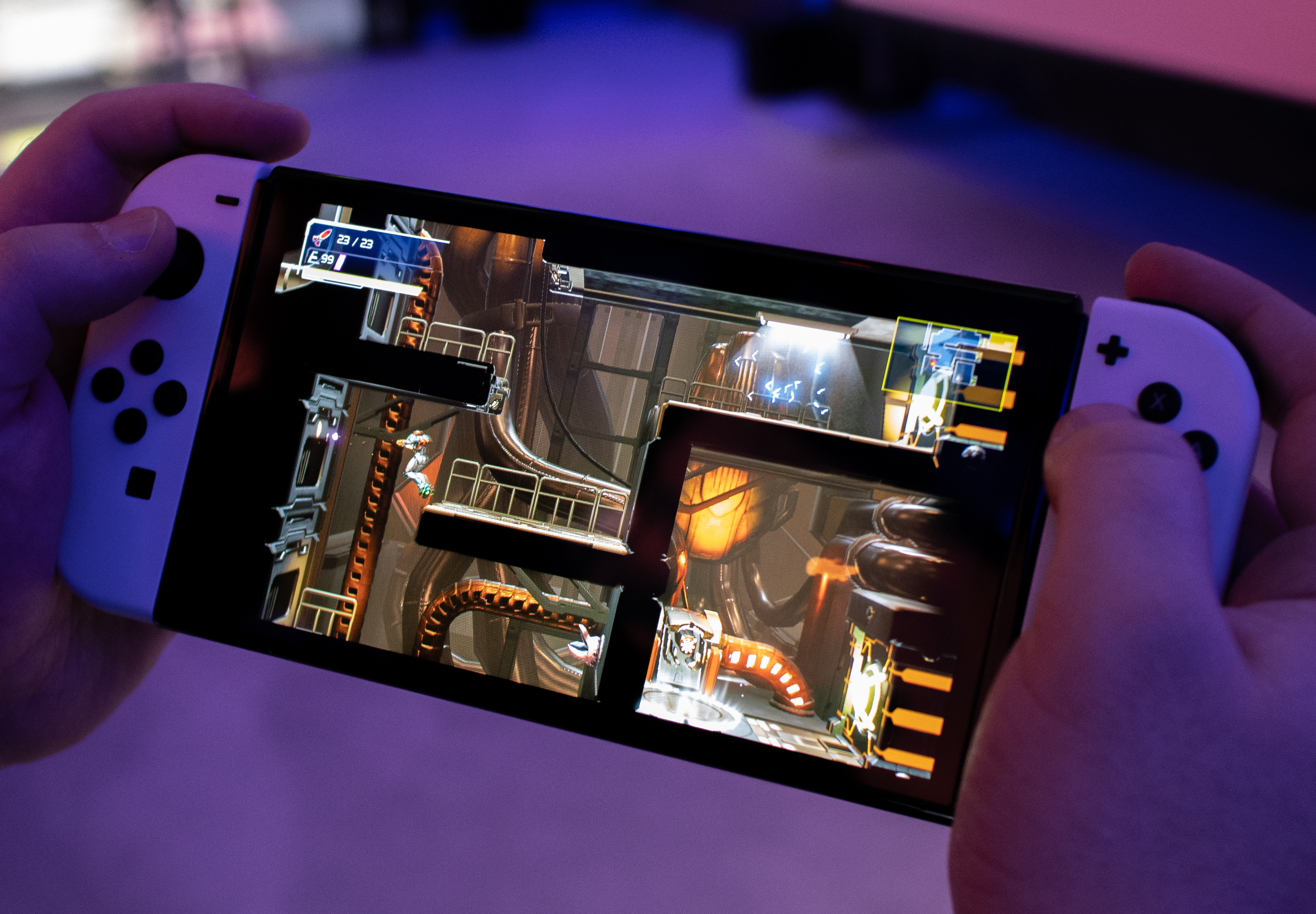
The jump to a 7-inch OLED is meaningful when we’ve all been confined to a 6.2-inch LCD, and the move comes with all of the benefits of shifting to the newer screen technology. OLED is superior to the LCD in many (but not all) ways, as its pixels can essentially turn off to exhibit true blacks. It’s why OLED has replaced LCD in most high-end smartphones.
Sure enough, deeper blacks make a difference here: the many 2D levels in a side-scroller like Metroid Dread are shrouded in darkness and look fantastic on the Switch OLED model. Colors pop against inky black environments without the chance of a blooming effect. We weren’t able to test out Metroid Dread on the original Nintendo Switch to appreciate the true gravity of the OLED model, but we’ll do that in our full Nintendo Switch OLED review soon.
OLED technology isn’t perfect – screens are often unable to get as bright as LCD panels and there’s always a chance of burn on. Good news on the former issue: I didn’t have trouble cranking up the brightness on the Switch OLED brightness slider. In fact, I had to turn down the brightness to snap photos. Our testing isn’t done yet, though. We’ll bring the Nintendo Switch OLED outdoors to determine how good it is on October 8.
New color and kickstand
Nintendo is pushing new white Joy-Con controllers in its promotional material for the Switch OLED model, and the fresh-looking color strikes a more adult tone compared to the Neon Blue and Red hue. Neon Red and Blue Joy-Con return as an out-of-the-box color option for the OLED console, but the white version has been more popular during pre-orders; it offers something different.
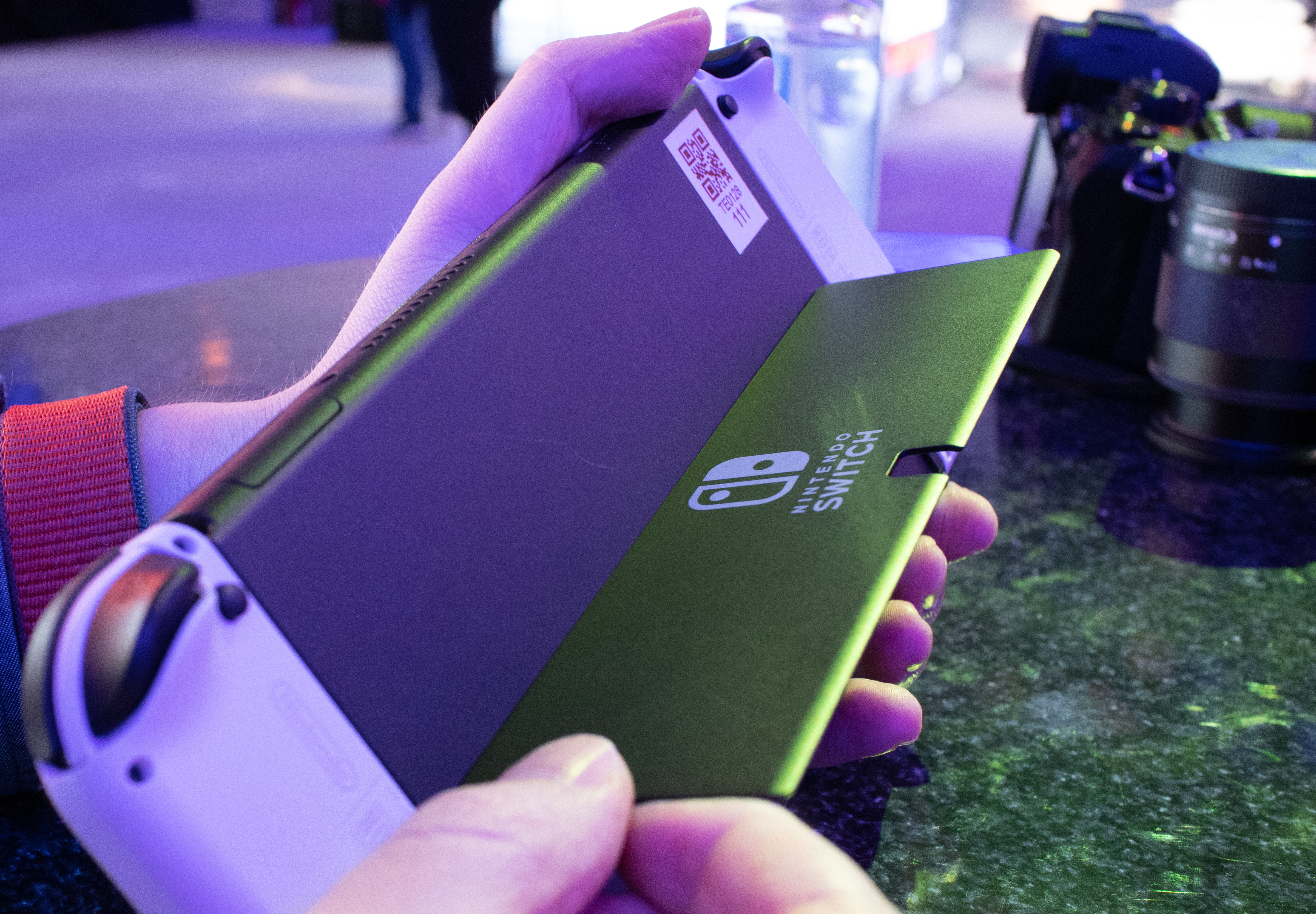
The rear kickstand of the original Switch received a much-needed makeover with the Switch OLED, and I couldn’t be happier with that decision. The original Switch worked in handheld mode, TV mode and the severely underutilized tabletop mode. The source of the problem? A flimsy kickstand. It still kind of worked – with the Joy-Con detached, I used tabletop mode for some impromptu multiplayer sessions with an airplane seatmate once and it was great. But the right-aligned finger-sized kickstand kept collapsing.
Nintendo fixes that issue with the Switch OLED kickstand that spans nearly the entire back of the screen and uses a stronger hinge to allow it to be open at multiple angles. There’s some nice resistance to the kickstand when setting the angle and a solid snap when collapsing it against the rear body of the new Nintendo Switch. Commence unfettered tabletop gaming.
You won’t find many other major design changes when jumping from the Switch to Switch OLED. The buttons and analog sticks are the same (we don’t know if the Joy-Con drift issues are truly fixed), the unique rail system to attach the Joy-Con hasn’t changed, and the dimensions are roughly identical: the new OLED model is just 0.1 inches wider than the original. This means all of your existing Nintendo Switch accessories should work just fine on the Switch OLED.
Speakers, Ethernet support and specs
My Nintendo Switch OLED demo came with robust gaming headphones, but I wanted to spend at least some time with the new onboard stereo speakers. It turns out the speakers are now powerful enough that I didn’t need to reach for the headphones the entire session. The docile tones of space-set Metroid Dread were able to cut through the noise of the demo room.
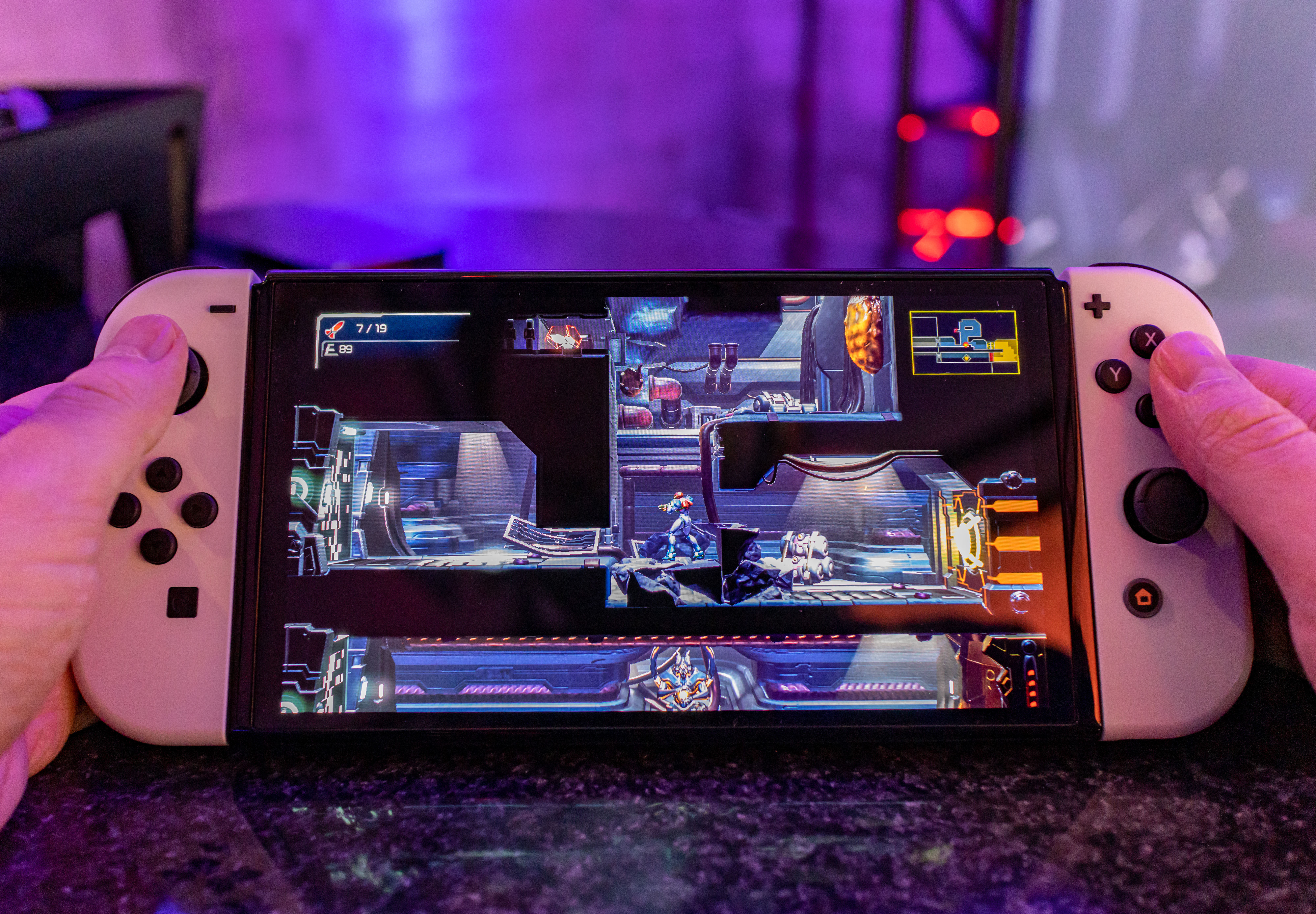
The wider front-firing stereo speakers on the Nintendo Switch OLED are another solid upgrade for handheld and tabletop modes. However, you won’t find anything like Dolby Atmos support in TV mode. The biggest perk in TV mode is tailored to online multiplayer gaming: the Switch OLED docking station now contains an Ethernet port for wired internet connections, far more reliable than sometimes problematic Wi-Fi.
Nintendo upgraded the internal storage size with the Switch OLED, bringing it to 64GB instead of 32GB, and of course you can (and should) use a microSD card for expandable storage. The microSD card slot is still contained behind the kickstand, this time in a center-aligned position.
The rest of the Nintendo Switch OLED specs mirror what we got from the original Switch, which was announced nearly five years ago at this point. It has the same Nvidia Custom Tegra X1 processor and 4GB of RAM, so it’s not going to push faster rendering of 3D graphics or add additional textures on new or existing games.
Early verdict
Nintendo Switch OLED is the console upgrade that pleases more than it wows. Its larger 7-inch OLED screen and more powerful speaker system over the four-and-a-half-year-old Switch offer a nice audio-visual boost that I, as a gamer who often uses the Switch as a handheld, will value. The wider kickstand incentivizes those occasional multiplayer outings in tabletop mode, too.
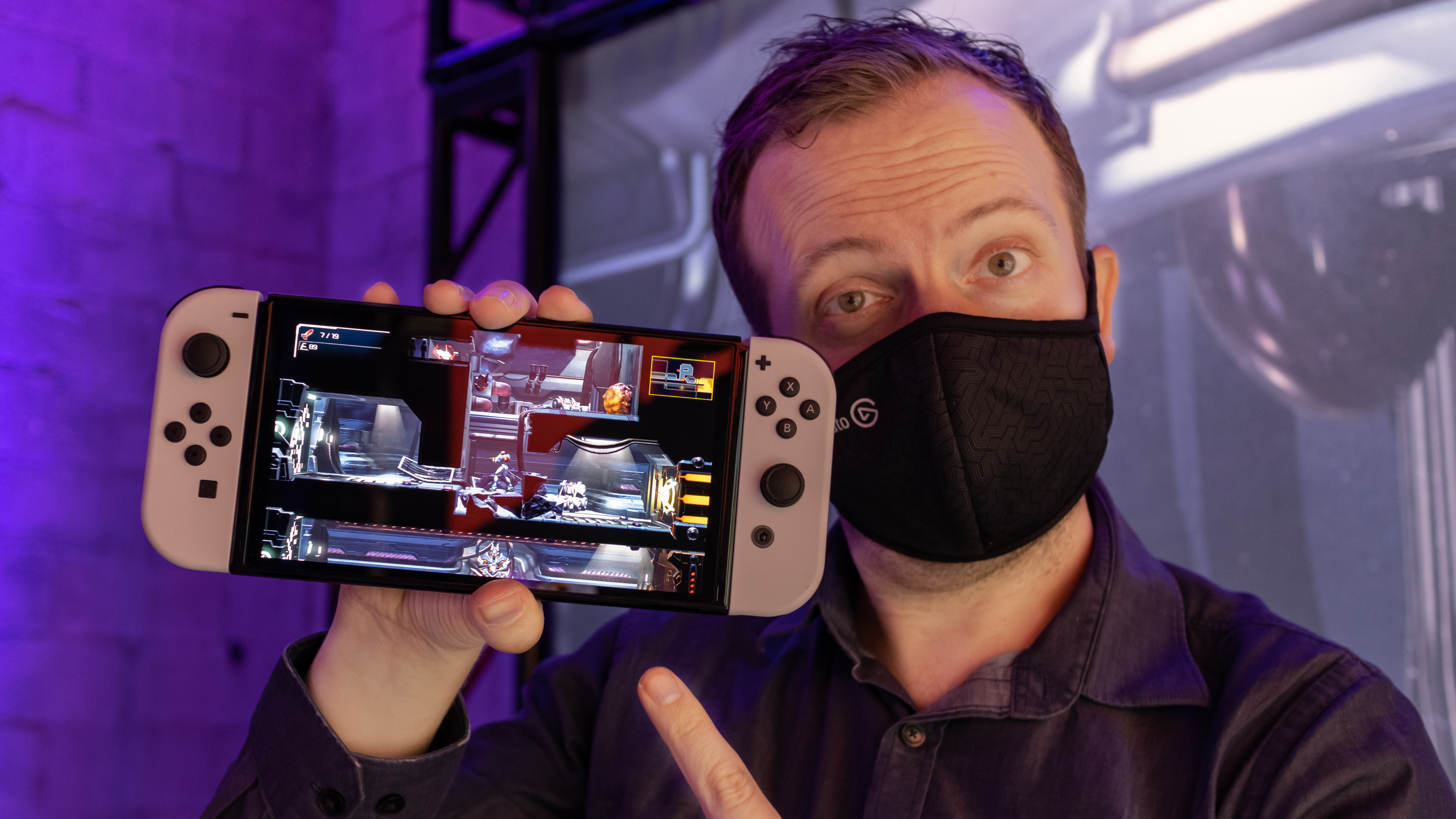
Anyone who exclusively plays Switch in the TV docking station right now will find the OLED model isn’t offering marked improvements. Ethernet support is nice and 64GB of internal storage could save you from buying a larger microSD card (or trying to find it behind your TV media cabinet), but that’s not enough reason to spend $349.99 / £309.99 / AU$539 – if you already own a Nintendo Switch. New buyers, right this way.
This isn’t the Nintendo Switch 4K, but it’s a nice stepping stone to play new games like Metroid Dread and next year’s The Legend of Zelda: Breath of the Wild 2, and replay classics like Super Mario Odyssey, Donkey Kong Country: Tropical Freeze, and Mario Kart 8 Deluxe, all of which deserve OLED treatment – and sequels.
0 comments:
Post a Comment